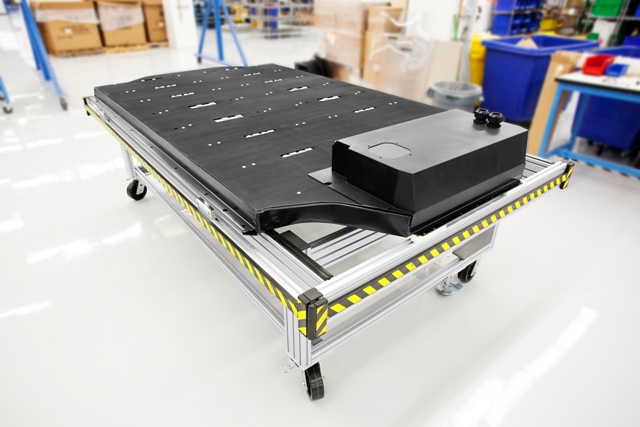With no tailpipe emissions, electric cars have a clear advantage over their gasoline and diesel counterparts when it comes to carbon emissions.
Studies have found that even cars charged on dirty, coal-powered grids have overall emissions no higher than a very fuel-efficient internal-combustion car.
But are there any other potential environmental issues related to electric cars?
DON'T MISS: Another study confirms electric cars have lower carbon emissions, in Minnesota this time
As global electric-car sales increase, more attention is being paid to the raw materials that go into the battery packs that power them.
Researchers continue to look for battery types that can improve upon current lithium-ion chemistries in areas like energy density, durability, and cost.
Yet if the potential environmental impact of new materials isn't considered as well, dirty batteries could undermine the benefit of clean electric cars, argues a recent Navigant Research blog post.

Battery pack assembly for 2015 Chevrolet Spark EV electric car at GM's Brownstown, Michigan, plant
Graphite is currently a promising option for use as an anode in lithium-ion batteries because of its abundance and high surface area.
However, processing graphite into coated spherical purified graphite (CSPG)—the material used in anodes—is harmful to the environment.
Manufacturing CSPG involves "purifying" raw graphite with hydrofluoric acid, a toxic and highly corrosive substance that can dissolve metal or glass.
ALSO SEE: Electric-car battery costs: Tesla $190 per kwh for pack, GM $145 for cells
Around 70 to 80 percent of graphite used in batteries is mined and processed in China, which doesn't exactly have the strictest environmental regulations.
It takes as much as 25 kilograms (55 pounds) of purified CSPG to make anodes for an electric-car battery pack.
In attempt to address some of these issues, six graphite companies have recently acquired a micronizing and spheronizing mill to produce CSPG.

Tesla Motors - Model S lithium-ion battery pack
They plan to mine and process graphite entirely in North America, which they believe will not only reduce costs but also allow for stricter environmental controls and development over time of less-harmful production methods.
There is significant incentive for graphite companies to make their product more attractive to carmakers and consumers.
MORE: What Comes After Lithium-Ion Batteries To Power Electric Cars, And When? (Dec 2015)
Current lithium-ion cells have many limitations—including high cost and limited storage capacity—and graphite is viewed by many as one possible solution toward increasing energy density for future electric vehicles.
As carmakers rely more heavily on electrification to meet stricter emissions standards, more focus on the manufacturing impacts of their batteries may well emerge.
That will, in turn, make issues like the environmental impact of graphite production all the more important.
_______________________________________________












